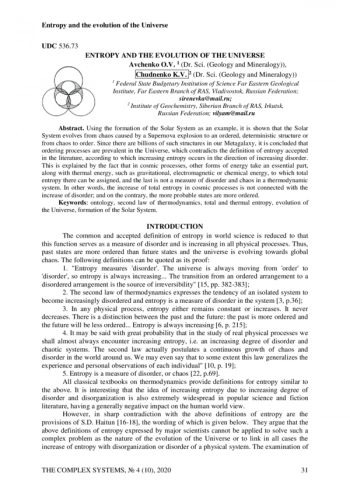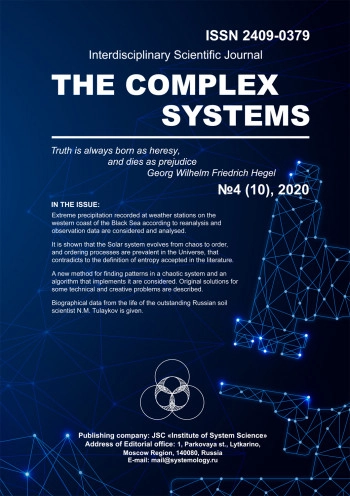Using the formation of the Solar System as an example, it is shown that the Solar System evolves from chaos caused by a Supernova explosion to an ordered, deterministic structure or from chaos to order. Since there are billions of such structures in our Metagalaxy, it is concluded that ordering processes are prevalent in the Universe, which contradicts the definition of entropy accepted in the literature, according to which increasing entropy occurs in the direction of increasing disorder. This is explained by the fact that in cosmic processes, other forms of energy take an essential part, along with thermal energy, such as gravitational, electromagnetic or chemical energy, to which total entropy there can be assigned, and the last is not a measure of disorder and chaos in a thermodynamic system. In other words, the increase of total entropy in cosmic processes is not connected with the increase of disorder; and on the contrary, the more probable states are more ordered.
Сайт https://scinetwork.ru (далее – сайт) работает по принципу агрегатора – собирает и структурирует информацию из публичных источников в сети Интернет, то есть передает полнотекстовую информацию о товарных знаках в том виде, в котором она содержится в открытом доступе.
Сайт и администрация сайта не используют отображаемые на сайте товарные знаки в коммерческих и рекламных целях, не декларируют своего участия в процессе их государственной регистрации, не заявляют о своих исключительных правах на товарные знаки, а также не гарантируют точность, полноту и достоверность информации.
Все права на товарные знаки принадлежат их законным владельцам!
Сайт носит исключительно информационный характер, и предоставляемые им сведения являются открытыми публичными данными.
Администрация сайта не несет ответственность за какие бы то ни было убытки, возникающие в результате доступа и использования сайта.
Спасибо, понятно.



